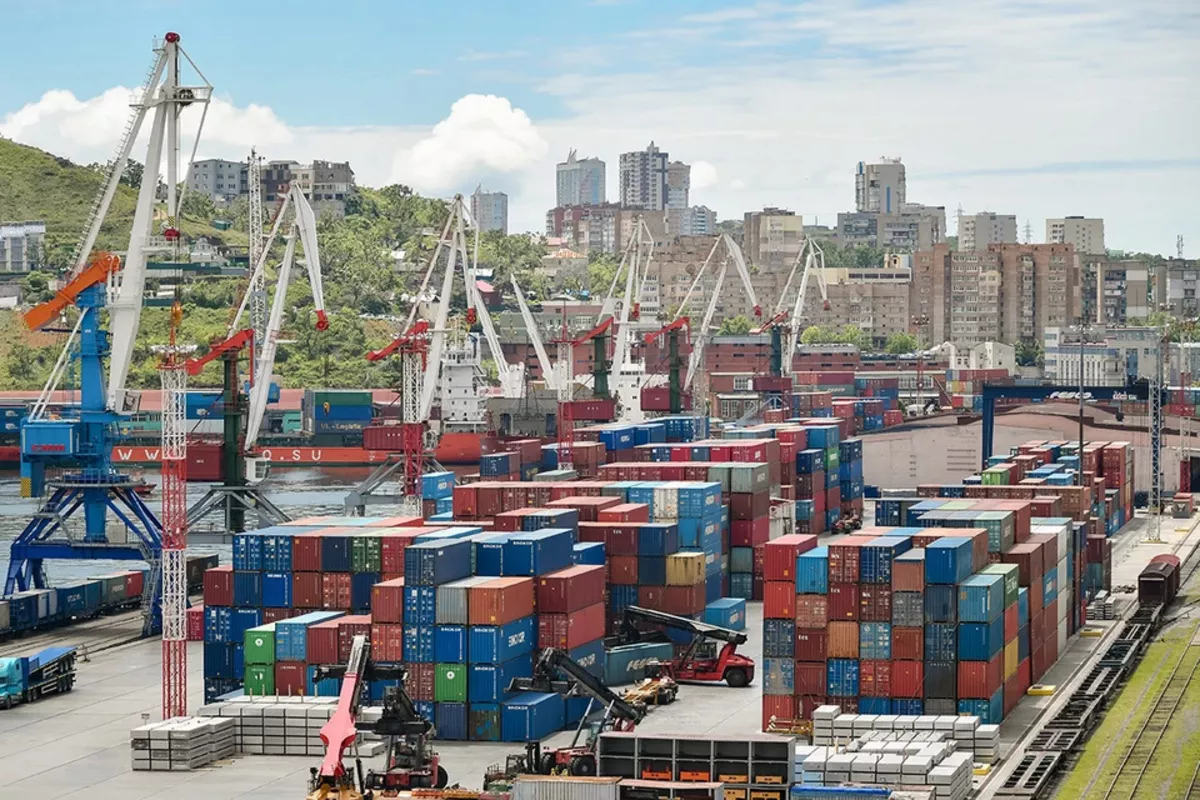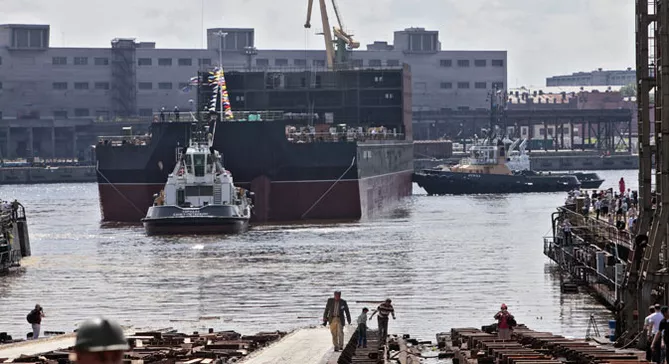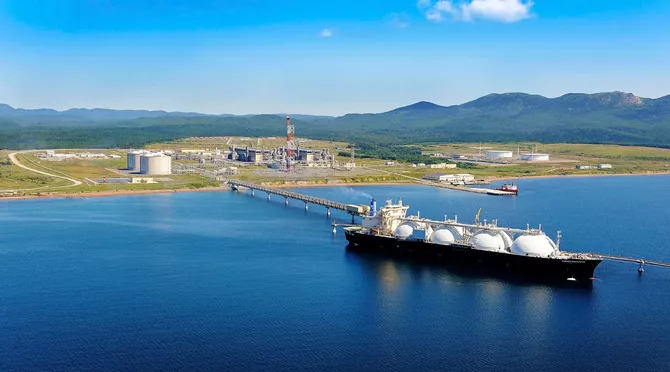
photo: TASS
On August 29, 2025, the Russian government approved a strategic document that could fundamentally reshape the country’s transport and logistics landscape and strengthen Russia’s position in global markets. The comprehensive plan for the development of port infrastructure is designed to run through 2036 and includes the construction of 25 new water transport facilities, 17 of which will be modern seaports. This program is not only aimed at modernizing the existing transportation system but also at creating new transport corridors to provide Russia with access to promising markets and reduce dependence on traditional Western routes.
The plan prioritizes the development of the Russian Far East, the Arctic, and the northwestern regions. These areas are seen as pivotal hubs for strengthening foreign economic ties and expanding export opportunities. This approach is directly linked to the changing geopolitical environment and ongoing sanctions pressure on Russia. With limited access to European ports, Moscow is focusing on diversifying its trade routes and establishing new logistics chains oriented toward Asian and Middle Eastern markets.

photo: Russia Beyond
The first phase of facilities is set to be commissioned by 2027, underscoring the ambitious pace of the program. Key projects in this phase include the Baltic Ship Mechanical Plant terminal in St. Petersburg, with a capacity of 5 million tons, which will handle the growing cargo flow in the Baltic region. In the port of Sabetta on the Yamal Peninsula, a major terminal for the transshipment of liquefied petroleum gas (LPG) and gas condensate with a capacity of 9.7 million tons will come online, playing a crucial role in expanding energy logistics and accessing new sales markets. In Primorsky Krai, two new facilities will be launched at the port of Posyet: a bulk terminal with a capacity of 10 million tons and a container terminal with a capacity of 500,000 TEU. These projects will become important links in integrating Russia with the economies of the Asia-Pacific region, where trade volumes continue to grow steadily.
In 2028, five significant projects are scheduled for launch. The largest of these will be the Coalstar coal terminal at the port of Vostochny, with a projected capacity of 17 million tons, significantly boosting coal exports to Asian countries, including China, South Korea, and Japan. Other projects include a multipurpose terminal in Pevek, Chukotka, with a capacity of 1.96 million tons; a specialized terminal for liquid chemical cargo and fertilizers in Ust-Luga, with a capacity of 8 million tons; a container terminal in Vladivostok with a capacity of 322,900 TEU; and the Nikolskoye terminal in the port of Petropavlovsk-Kamchatsky, with a capacity of 15,000 tons. These facilities are designed to support both foreign trade and domestic cargo distribution.
In 2029, the program’s focus will shift heavily to the Russian Far East. Three major projects will be completed: the terminal of the Primorsky Metallurgical Plant, with a capacity of 2.1 million tons; the Elga Port coal terminal in Vanino, with a capacity of 30 million tons; and the Aurora Marine Port oil terminal in Primorsky Krai, with a capacity of 10 million tons. The latter is especially important for ensuring stable oil and petroleum product deliveries to Asian markets. The following year, in 2030, the second phase of the Aurora coal terminal will be commissioned, adding 25 million tons of capacity. In addition, a multipurpose terminal in Ust-Luga with a capacity of 24.3 million tons and a grain terminal in Vysotsk with a capacity of 4 million tons will be launched. These facilities will significantly expand Russia’s export potential for both energy resources and agricultural products.
The Arctic region receives special attention as a strategic priority. In 2032, a major LNG transshipment complex will begin operations in the Ura Bay at the port of Murmansk, with a capacity of 20.4 million tons. This project will boost liquefied natural gas exports to both Asian and European markets, providing greater flexibility amid shifting global energy dynamics. Arctic developments are also critical for the expansion of the Northern Sea Route, which has the potential to become a full-fledged alternative to traditional shipping lanes such as the Suez Canal.

photo: Upstream online
The final stage of the program will culminate in 2036 with the completion of a marine oil terminal in Ulysses Bay, Vladivostok, with a capacity of 550,000 tons. This facility will be a key element of the long-term strategy to position Primorye as a major hub in global energy trade.
In addition to constructing new capacities, the plan includes large-scale modernization of existing facilities. In 2029, the upgrade of the Vaninotransugol terminal in the port of Vanino will be completed, followed by the modernization of the Daltansugol coal terminal in 2030. These upgrades will add a total of 40 million tons of capacity, significantly strengthening Russia’s coal export industry. By 2028, the reconstruction of the locks at the Gorodets hydro complex near Nizhny Novgorod and the construction of the Bagaevsky hydro complex on the Don River are also planned. These projects are essential for improving inland logistics, easing pressure on key rail and road transport arteries, and ensuring more balanced distribution of cargo flows.
Against the backdrop of sanctions, Russia is compelled to develop new logistics solutions. The expansion of facilities in Primorsky Krai and Chukotka will allow the country to reinforce its role as a key supplier of raw materials and finished goods to the Asia-Pacific region. Simultaneously, the modernization of ports in the Baltic and Murmansk regions will help partially offset the decline in European trade flows, creating a more resilient and flexible logistics network capable of adapting to geopolitical shifts.
According to expert estimates, the plan’s implementation will increase Russia’s total port throughput capacity by more than 100 million tons. This will serve as a powerful driver for the development of related industries, including shipbuilding, metallurgy, and transport engineering. Moreover, the program will create tens of thousands of jobs in coastal regions, providing a significant boost to their socio-economic development.
The newly adopted plan is not merely a response to current global challenges but also a forward-looking blueprint for long-term growth. Russia is, in effect, creating a new map of its maritime communications, pivoting decisively toward the East. In the coming years, the Far East and the Arctic are poised to become key nodes in global trade networks, granting the country greater strategic autonomy and resilience in the face of international crises. Thus, the large-scale development of port infrastructure emerges as a cornerstone of Russia’s strategy to strengthen both its economic and political sovereignty.
By Samir Muradov
Share on social media